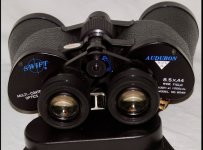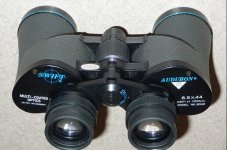Paultricounty
Well-known member

Does anybody have any information concerning the different models and generations of the swift audubon ? There seems to be multiple examples some of them saying Widefield in the same area than others that say MarkII. Then some have a R designation and another I believe HR5, or something like that.
Attached are two examples, also some of the same models are multi coated and some of them are fully multi coated, we don’t have to get too much into that.
any information is greatly appreciated.
Paul
Attached are two examples, also some of the same models are multi coated and some of them are fully multi coated, we don’t have to get too much into that.
any information is greatly appreciated.
Paul





